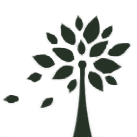In June 2013, Lancaster primary schools were invited to participate in an exciting and innovative programme of educational activities for the school year 2013 – 2014.
The project, funded by the Heritage Lottery Fund, was to develop a programme of activities for the new Flora area of the Nature Reserve and to inspire and stimulate the children’s interest in their local environment.
The eight schools taking part in the project were:
- Dallas Road Community
- Willow Lane Community
- Scotforth C E
- Moorside Community
- Ridge Community
- Cathedral St Peters
- Ryelands Community Skerton St Lukes C E
Over 300 children (11 classes) took part in the project.
There were visits to the schools in the autumn and spring terms and a visit to the new area of the nature reserve in the summer term.
The teaching sessions were delivered by experienced and enthusiastic tutors from the Fairfield Association and our partners, the RSPB Leighton Moss and Lancashire Wildlife Trust Heysham.
Activity topics included:
- viewing the plans for the Flora site and map activities.
- historical significance of the area; The children being particularly impressed by the finds of
- the metal detectors!
- conservation and sustainable management of the new nature reserve.
- farming the area in past times.
- felt making.
- wildlife of the hedgerow and woodland habitats
Educational Materials
To support the programme of activities, a range of educational materials were produced.
Habitats and Wildlife
There are several different habitats in the nature reserve – woodland, wet meadow, ponds and grassland. Although several of the activities below relate to hedgerows, and we do have a lot of them in the nature reserve, they are also applicable to woodlands and other habitats.
Introduction to Habitats (PDF)
Importance of Hedges to wildlife (PDF)
Habitats – who lives there? (PDF)
Landscape and Farming
The Flora part of the nature reserve currently comprises a small area of mature mixed woodland, hedgerows, wet meadow and grazed pasture. The area has been farmed for many years prior to becoming a nature reserve. There are records and physical evidence dating back to the 13th century. In the fields are visible signs of medieval strip fields farmed by the townspeople of Lancaster. Here they would have grazed livestock and most likely grown oats. The method of farming changed little through Tudor and Georgian times until the early 19th century when the fields were made larger and probably many of the hedges planted. In more recent times the fields have been grazed by sheep.
Pony Wood was planted as a landscape feature by Aldcliffe Hall in the mid 19th century. In the wet meadow areas of the reserve we will have cattle grazing at certain times of the year. You may be surprised to know that having cattle in these areas can be beneficial to some wildlife, particularly ground nesting birds.
In the fields around Pony Wood we plan to grow cereal, most probably oats, as was done many years ago. Although not as a food crop for humans but as a fodder crop for animals. By doing this we will also be creating a new habitat for wildlife. Around the field edge will be a ‘field margin’. A field margin is a ‘wild’ area of about 3 metres wide around a field edge where crops are not grown. This creates a haven suitable for wild flowers, bees, seed eating birds and small mammals.
Literacy and Storymaking
The varied habitats and history of the area can provide a wealth of ideas for factual and creative writing. Here are activities that you and your class will enjoy.
As you will see from the history section, a variety of objects dating back several centuries have been found in the area. These objects can fire the imagination and be a resource for storywriting. – how did they get there, who did they belong to, were they lost or put there?
Art
Here are some suggested activities to complement our work with you.
Make a Hedgerow Collage
During our project, why not make a hedgerow collage for your classroom wall and use it to show changes in a hedgehroughout the seasons of the year.
Here are some ideas for you:
Autumn/Winter
- Autumn leaves
- Fruits and seeds
- A chirpy robin
- A hedgehog hibernating in the leaves at the bottom of the hedge
- A solitary owl in a tree waiting for a mouse!
- Bare branches
- An old birds nest
- Fungi
Spring/Summer
- Emerging leaves and flowers
- Butterflies and Bees
- Caterpillars
- Hawthorn blossom
- Birds making nests
- Spiders
Felt Making
In session two we will be making a piece of felt from raw wool. It is very likely that people who worked on the land would have worn items of clothing made from felt, possibly made in their own homes. Felt is a fabric that has been used for many centuries to make coats, hats, blankets and other items.
Working with clay
How about making clay tiles depicting the work of a medieval farmer perhaps showing cereal being planted or harvested, ploughing and animals. Or try your hand at making a simple pot.
Maps
History
There is evidence of human activity in and around the Flora site over many years. In the fields are visible signs of medieval strip fields. These are called ‘lynchets’ and were terraced strips wide enough to accommodate a plough and team of oxen. A stone axe has been found in the fields near Lucy brook. A variety of small objects have also recently been found. These include buckles, sack seals, musket balls and coins dating back to the early 18th century.
All of these fire the imagination as to how they might have got there and who lost them!
Also look at the other pages of the Fairfield Association website where you will find more information about the nature reserve, our work and many useful photographs.

